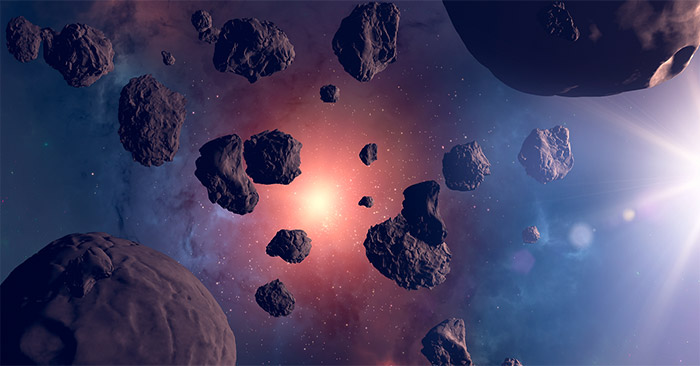Astronomers create the most accurate map of all matter in the universe
Of the tens of thousands of conundrums facing astronomers today, the biggest unknown is probably about the matter that makes up most of the universe. You may not know it, but all the atoms, stars, planets, plants, rocks, humans, animals make up less than 5% of the known matter of the universe. The remaining about 70% is dark energy and 25% is dark matter.
But because dark matter - as the name suggests - does not interact with light, it is extremely difficult to study. Scientists must deduce the existence and location of dark matter from looking at how it interacts with the normal matter around them.
A series of in-depth studies conducted recently are assisting scientists in their quest to solve this conundrum. One of them is creating the most accurate map to date of how both ordinary matter and dark matter propagate throughout the universe. A huge amount of data has been collected from two different telescopes: the Dark Energy Survey and the South Pole Telescope to create the most accurate map. maybe.

For both data sets, the researchers used gravitational lensing — in which a massive object such as a star, galaxy, or galaxy cluster warps space, time, and activity. acts like a magnifying glass — to detect both normal and dark matter.
The results yielded a number of surprises, such as the fact that matter would normally be less 'clumped' than currently assumed based on current analytical models of how the universe formed. It shows that the problem is spread more evenly than expected. If other surveys find similar results, this could indicate that there is still something missing that current simulation theories of how the universe formed in the period immediately after the Big Bang have not been addressed. arrive.
All in all, at the present time, even though we know that both dark matter and dark energy exist, we still don't have any really remarkable clues about them. The appearance of such material maps will partly help scientists in this difficult task.
You should read it
- Dark matter, dark energy and unexplored mysteries
- Elements of the universe
- Scientists have finally discovered the mystery of dark matter in the universe
- Finding new materials capable of detecting dark matter
- Dark energy and dark matter may not exist as scientists believe for nearly a century
- After all the mysterious material that occupies more than half of the universe hidden for billions of years has been discovered
- The 9 biggest mysteries of modern physics make scientists headaches (Part 2)
- 9 amazing facts about the universe amaze you
- The 9 biggest mysteries of modern physics make scientists headaches (Part 1)
- What is Dark Web? Who uses it? The potential dangers of Dark Web and warnings
- New research confirms: The mystery of 'dark energy' may not exist
- It turns out 15 'facts' about the Earth and the universe that we still believe is completely wrong
May be interested

10 brightest stars in the sky

NASA has just discovered an asteroid with an extremely 'weird' shape

Admire the majestic spectacle of swirls of dust and gas in nearby galaxies

Ukrainian Space Industry Can Give ESA's Initiatives a Strong Scientific Boost

James Webb captured the most difficult to find object in the universe, 2,000 light years away

Galaxy merger moment gives glimpse into Milky Way's future






 Elements of the universe
Elements of the universe The supernova exploded twice in the universe, surprising astronomers
The supernova exploded twice in the universe, surprising astronomers How will the universe end?
How will the universe end? Scientists have finally discovered the mystery of dark matter in the universe
Scientists have finally discovered the mystery of dark matter in the universe Scientists conclude that the universe should have been wiped out since its formation
Scientists conclude that the universe should have been wiped out since its formation After all the mysterious material that occupies more than half of the universe hidden for billions of years has been discovered
After all the mysterious material that occupies more than half of the universe hidden for billions of years has been discovered